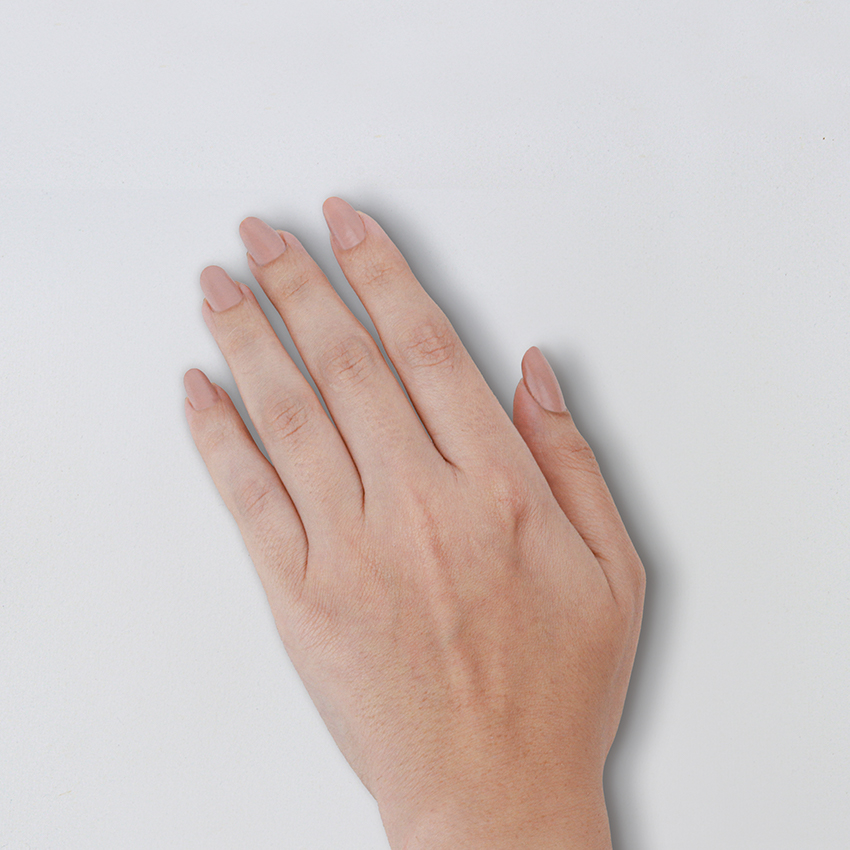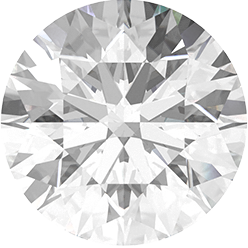Diamond Carat Guide
If you have ever shopped for diamonds, you would have certainly heard the word ‘carat’ often enough. It’s the one thing that people quote and talk about above all else, but what does it mean when you start looking for a stone that will be with you for a lifetime?
What does Carat Mean in Diamonds?
The term carat dates back to ancient India, the birthplace of the world’s diamond trade. Sellers and traders used the consistency of size and weight of the tiny carob seed to define a new significance and measure, specifically, for the precious stones we now call diamonds.
The carat of a diamond is simply how much it weighs. The more carats (, the heavier) a diamond is, the more valuable it will be. But it is important to note that things like the skill of the cut and the intrinsic quality of the stone will alter the value, and so it is not expressed by the carat alone.
For precision, a carat is divided into 100 points. So 0.40 carats would be 40 points of a single carat. For ease of comparison, 1 carat is equal to 0.2 grams. We are telling you right away how valuable these highly sought-after precious stones are.
Diamond Carat Conversion Tool


- 0
- 10
- 20
Diamond carat to MM size conversion Chart
Round Cut
| MM Size | Carat Weight |
| 0.8 | 0.0025 |
| 1 | 0.005 |
| 1.10 | 0.006 |
| 1.15 | 0.007 |
| 1.25 | 0.009 |
| 1.3 | 0.01 |
| 1.5 | 0.015 |
| 1.75 | 0.02 |
| 1.8 | 0.027 |
| 2 | 0.035 |
| 2.25 | 0.047 |
| 2.5 | 0.065 |
| 2.75 | 0.078 |
| 3 | 0.11 |
| 3.25 | 0.13 |
| 3.5 | 0.165 |
| 3.75 | 0.199 |
| 4 | 0.25 |
| 4.25 | 0.265 |
| 4.5 | 0.38 |
| 4.75 | 0.44 |
| 5 | 0.50 |
| 5.25 | 0.60 |
| 5.5 | 0.70 |
| 5.75 | 0.76 |
| 6 | 0.90 |
| 6.25 | 0.93 |
| 6.5 | 1.10 |
| 6.75 | 1.24 |
| MM Size | Carat Weight |
| 7 | 1.33 |
| 7.25 | 1.50 |
| 7.5 | 1.67 |
| 7.75 | 1.75 |
| 8 | 2.00 |
| 8.25 | 2.15 |
| 8.5 | 2.43 |
| 8.75 | 2.55 |
| 9 | 2.75 |
| 9.25 | 3.05 |
| 9.5 | 3.35 |
| 9.75 | 3.61 |
| 10 | 3.87 |
| 10.25 | 4.16 |
| 10.5 | 4.41 |
| 10.75 | 4.57 |
| 11 | 4.91 |
| 11.25 | 5.49 |
| 11.5 | 5.85 |
| 12 | 6.84 |
| 12.25 | 7.26 |
| 12.5 | 7.36 |
| 12.75 | 7.52 |
| 13 | 8.51 |
| 13.5 | 9.53 |
| 14 | 10.49 |
| 15 | 12.89 |
| 16 | 16.06 |
Diamond Size Chart

How do I choose a diamond carat?
Choosing a carat can often be a matter of budget. With larger stones not only containing more precious material but also being less frequently discovered in the mines, the price points quickly escalate.
At Abelini, we keep things simple so why not check out the 4 main points to consider:
Finger Sizes
The aim is not to get the most significant possible stone at any cost. It would help if you found something that looks beautiful on your hand. Long delicate fingers will enhance the apparent carat size, whilst shorter, thicker fingers will reduce it. Finding the suitable stone is a matter of trying on many different styles before you find the one, so don’t feel like you have to find the perfect match straightaway.
Setting Options
To find the right ring, you need to create harmony between the setting and the stone. Thicker and more robust-looking sets will make the apparent carat size look smaller and vice versa. It’s all about finding the perfect balance.
The Shape
For example, elongated cuts such as the marquise will look larger at a fixed carat size than the princess shape. If you are keeping an eye on your budget, don’t be afraid to shop around for a shape that maximises the apparent carat size.
Pricing Tips
0.5 or 1-carat weights are the most popular. This is fantastic for the shopper who is browsing with the budget in mind because it means less popular sizes such as 0.85 ct will be sold at a slight discount per carat. Shop around and find the right balance between price and size, and you’ll be surprised at what you can find for your money.
FAQs
The carat of a diamond refers to the weight of a diamond which largely determines its price. Diamonds with higher carats are worth a lot more. The size of a diamond refers to the measurements of its height and width. The size of the diamond doesn’t affect the value.
The most popular carat weight is between 1.0-1.9. However, some people opt for lighter diamonds at 0.70-0.79 or slightly heavier ones between 1.50-1.59. The carat weight you choose all depends on the type of diamond you’re after and your budget. Anything over a 2-carat diamond is often considered quite flashy.
The average carat size on an engagement ring in the UK is around 0.6 carats. Most people tend to opt for a carat weight between 0.5-1 carat for an engagement ring depending on your budget and the style of ring and diamond you’re after. Some people prefer flashier engagement rings to wedding rings and vice versa.
Most jewellers would recommend having an engagement ring that is between 1-2 carats. However, this depends on your taste and budget. There are no exact rules to engagement rings, with more people opting for more unique styles of rings over traditional diamond rings.
Wedding rings are different to engagement rings as they are built to last. The most common type of wedding ring is something in the region of 18-carat gold for the wedding band itself. This is because anything below 18 carats is at risk of breaking or scratching due to the soft metal. Anything extra such as additional diamonds for example is down to the individual.
Essentially the higher the carat the more valuable a diamond is. If you prefer your diamonds to have a higher value, you should opt for higher-carat diamonds.
The magic sizes in diamonds include half-carat, three-quarter carat and carat. There’s not much difference between each type visually but there can be a large price difference.
The modernised carat system for diamonds started with carob seeds, which were used as counterweights in gem trader’s balance scales. This method eventually evolved to using a set standard of weight across all corners of the world, the carat. The carat is now the same gram weight across the world to standardise the measurement of precious metals and gems.




